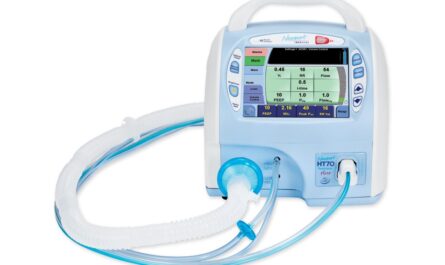
The automated cell counters market provides significant advantages over conventional microscopic analysis methods such as reduced analysis time and improved accuracy and reproducibility. Automated cell counters use advanced optical and microfluidic technologies to provide rapid cell counting and characterization. The need for precise and efficient analysis of cells in biomedical research and for clinical diagnostics is driving the demand for automated cell counters.
The Global Automated Cell Counters Market is estimated to be valued at US$ 3.75 Billion in 2024 and is expected to exhibit a CAGR of 7.0% over the forecast period 2023 to 2030.
Key Takeaways
Key players operating in the Automated Cell Counters are Thermo Fisher Scientific, Danaher Corporation, Agilent Technologies, PerkinElmer Inc., Bio-Rad Laboratories, BD, Merck KGaA, Logos Biosystems, Corning Incorporated, Tecan. Thermo Fisher Scientific and Danaher Corporation hold a major share of the automated cell counters market.
The growing prevalence of chronic diseases and increasing research expenditures for cell-based research are fueling the demand for automated cell counters. Cell counting has wide applications in biomedical research, clinical diagnostics, and development and production of biotherapeutics.
Globally, the automated cell counters market is witnessing rapid expansion. The improving healthcare infrastructure, proliferation of CROs & CMOs, and favorable government funding initiatives are boosting the adoption of automated cell counters across emerging markets such as Asia Pacific and Latin America.
Market Key Trends
Rapidly increasing preferences for preclinical laboratory automation solutions is a key trend in the automated cell counters market. Researchers and laboratories are automating routine tasks to enhance productivity and reduce manual errors. Automated cell counters integrate seamlessly into preclinical laboratory automation workflows for high-throughput processing of samples. This allows hassle-free cell counting and characterization for large sample sets. Major players are focusing on development of integrated systems that can automate sample preparation, staining, imaging, and analysis in addition to cell counting. This end-to-end automation is increasingly demanded in biopharmaceutical and biotech industries.
Porter’s Analysis
Threat of new entrants: New companies find it difficult to enter the market due to high cost of research and development and presence of well-established players.
Bargaining power of buyers: Buyers have low bargaining power due to less availability of substitutes and dependency on patented technology.
Bargaining power of suppliers: Suppliers have moderate bargaining power due to availability of alternative components but suppliers cannot afford to lose contracts from major players.
Threat of new substitutes: Threat of substitution is low since there are limited alternatives to automated cell counters for various applications in biotechnology and pharmaceutical industries.
Competitive rivalry: Intense competition exists among key players to strengthen their product portfolio and geographical reach through strategic partnerships and new product launches.
The geographical region that accounts for the highest value share in the automated cell counters market is North America due to large biopharmaceutical industry and rapid adoption of advanced technologies. Asia Pacific is expected to be the fastest growing regional market owing to rising geriatric population, increasing healthcare expenditure, improving healthcare infrastructure and growing biotechnology industry in countries like China and India.
*Note:
- Source: Coherent Market Insights, Public sources, Desk research
- We have leveraged AI tools to mine information and compile it


